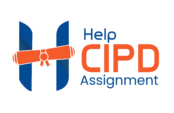Blog
AC2.1 Distinguish between organisational conflict and misbehaviour, and between informal and formal conflict
- October 27, 2023
- Posted by: admin
- Category: CIPD Level 5

Topic: Understanding various forms of employee-organised conflict and distinguishing between informal and formal conflict.
Guideline:
In this question, learners are being asked to differentiate between organisational conflict and misbehaviour. They are also required to outline the difference between informal and formal conflict. Learners must demonstrate their understanding of the main concepts that differentiate between conflict and inappropriate behaviour, and conflict understanding and conflict. For example, learners should explore different management methods, such as discipline, when distinguishing between conflict and inappropriate behaviour. It is important for learners to provide different examples for each concept, such as the operation of policies in an organisation or the impact of inappropriate behaviour. The conflict represented by group disagreement is different from conflict in which the leader’s communication is ineffective. Encouraging discussion about positive and negative impacts can improve understanding. Learners should compare and contrast examples to better understand organisational dynamics. Therefore, to successfully answer this question, learners are required to discuss the following areas:
- Discuss organisational conflict and misbehaviour.
- Discuss informal and formal conflict: informal conflict.
- Outline the recognition that conflict can be both positive as well as negative.
- Give examples.
- Include references.
Organisational conflict and misbehaviour.
- Learners should define what is organisational conflict. Learners can state the things that are involved in organisational conflict such as disputes, disagreements, issues between employees and issues between employees and management. They can also discuss the different forms of organisational conflict which include strikes, work-to-rule, go-slow, overtime bans, protests, and disruptive behaviour.
- Learners should define what is misbehaviour. Learners can address actions that are associated with misbehaviour such as sabotage, fraud, absenteeism, and walking out. They can also discuss how these actions are normally unorganised. Learners need to address the consequences that misbehaviour has for an organisation.
Informal and formal conflict: informal conflict.
- Learners should discuss what is informal conflict and state what it includes. For example, learners can discuss such actions as spontaneous arguments, cultural differences, and disagreements over opinions. It can also be associated with differing conflict styles within a team.
- Learners should discuss what is formal conflict. They can discuss its nature of being more structured, and how it involves leadership styles that encourage debate and different perspectives. It can also be associated with organised conflict resolution processes.
Recognition that conflict can be both positive as well as negative.
- Learners are also required to discuss both the positive and the negative aspects of conflict in an organisation. They can discuss the positive aspects of conflict such as leading to creativity in problem-solving and innovation. They also need to address the negative aspects of conflict which include disruption of productivity and causing harm to workplace relationships.
Examples.
Learners should provide valid and real-life examples to prove that they have gained a great understanding. Samples of examples that learners can provide include:
- In organisational conflict, learners may give an example of a labour strike initiated by a trade union to demand better working conditions and wages for employees in a certain organisation.
- In misbehaviour, learners can give an example of an employee intentionally damaging an organisation’s property in response to a dispute.
Sources of Evidence:
Learners are required to cite academic sources such as books and journals in CIPD, industrial relations and conflict resolution to support their understanding. They may also consider referring to reliable case studies and blog articles that provide real-world examples of conflicts and misbehaviour in organisations. Among the reliable sources of evidence, they can use include:
Liddle, D. (2023). Managing conflict: A practical guide to resolution in the workplace. Kogan Page Publishers.
CIPD, (2020) Managing conflict in the modern workplace. Available from https://www.cipd.org/uk/knowledge/reports/managing-workplace-conflict-report/
Must Read:
5HR01 Employment Relationship Management Assignment Guideline Task One


